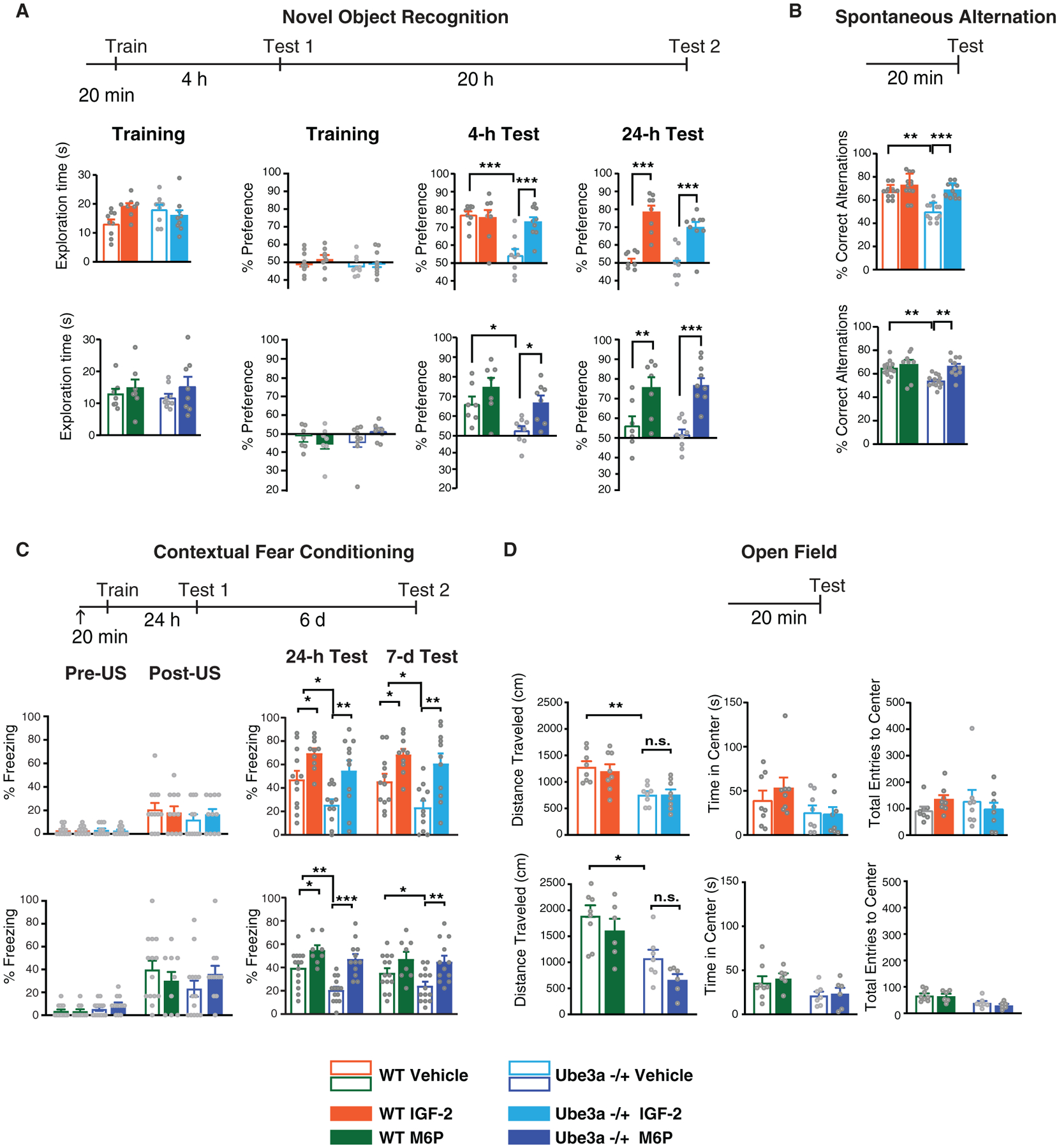Figure 2.

Subcutaneous injection of IGF-2 or M6P reverses deficits in memory retention and flexibility in Ube3am−/p+ mice. (A–D) Experimental schedules are shown above graphs. S.c. injection of IGF-2, M6P, or Vehicle (↑) was administered 20 min before commencement of behavior. (A) Novel object recognition. From left to right: exploration time of both objects (expressed in seconds) and percent of time exploring both objects (% preference) during training, percent of time spent exploring the novel object in the nOR test by WT and Ube3am−/p+ mice tested at 4 hr and 24 hr after training. (B) Spontaneous alternation. Percent of correct alternations in a Y-maze test of WT and Ube3am−/p+ mice. (C) Contextual fear conditioning. Percent of time spent freezing (% freezing) in contextual fear conditioning (CFC) in WT and Ube3am−/p+ mice at training (pre-unconditioned stimulus [pre-US, footshock] and post-US), 24 hr (Test 1), and 7 days (Test 2) after training. (D) Open field behavior. From left to right: distance traveled (in cm), time spent in the center of the open field expressed in seconds, and total number of entries into the center of the arena expressed of WT and Ube3am−/p+ mice. All data are expressed as mean ± s.e.m; n = 6–14 per group. Two-way analysis of variance (ANOVA) followed by Tukey’s post-hoc tests: *P < 0.05, **P < 0.01, ***P < 0.001. n.s., not significantly different.
